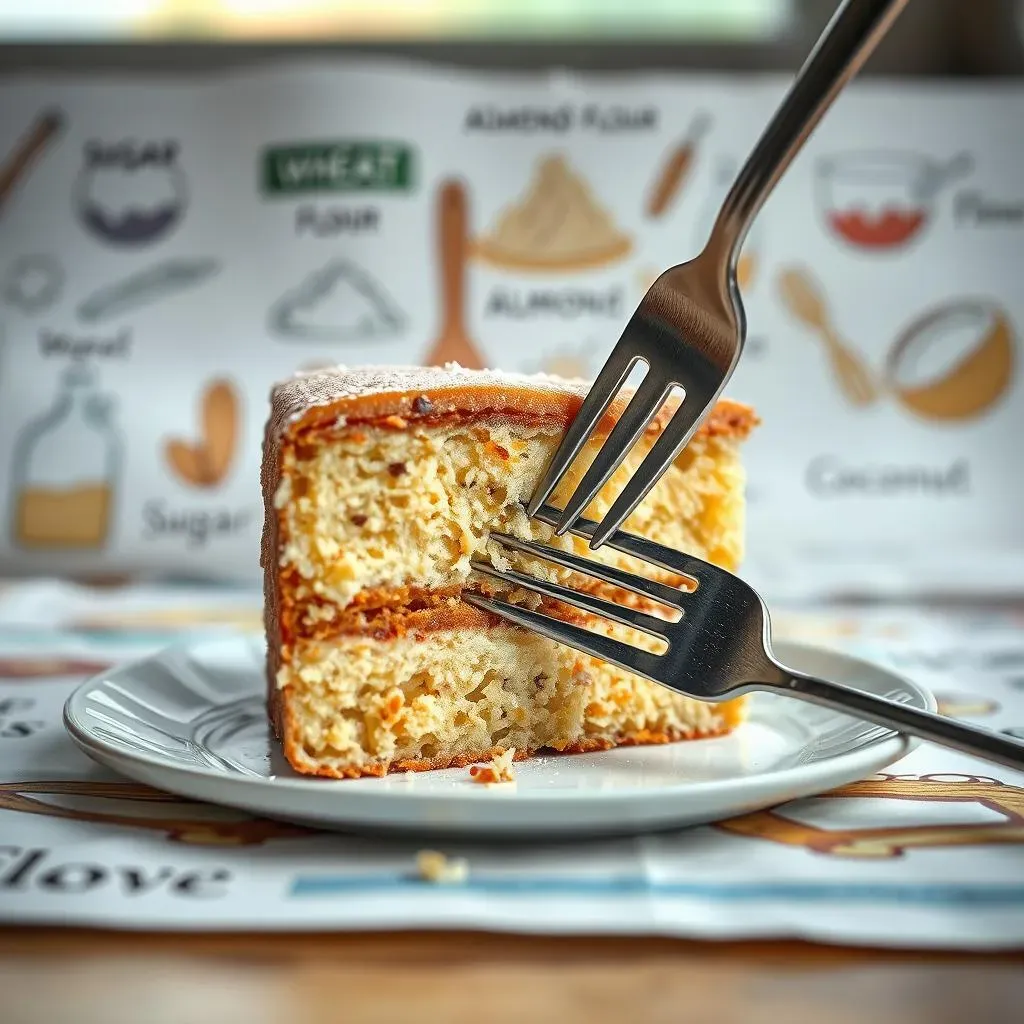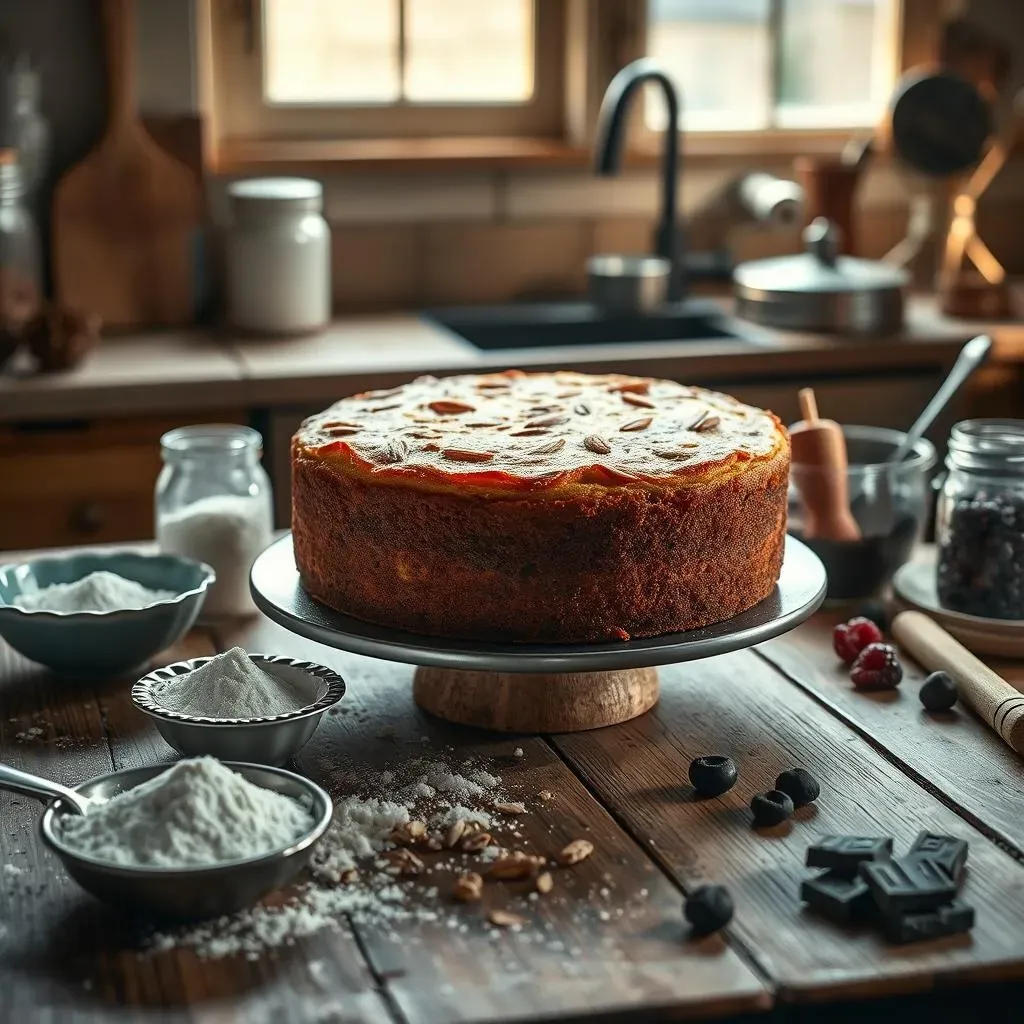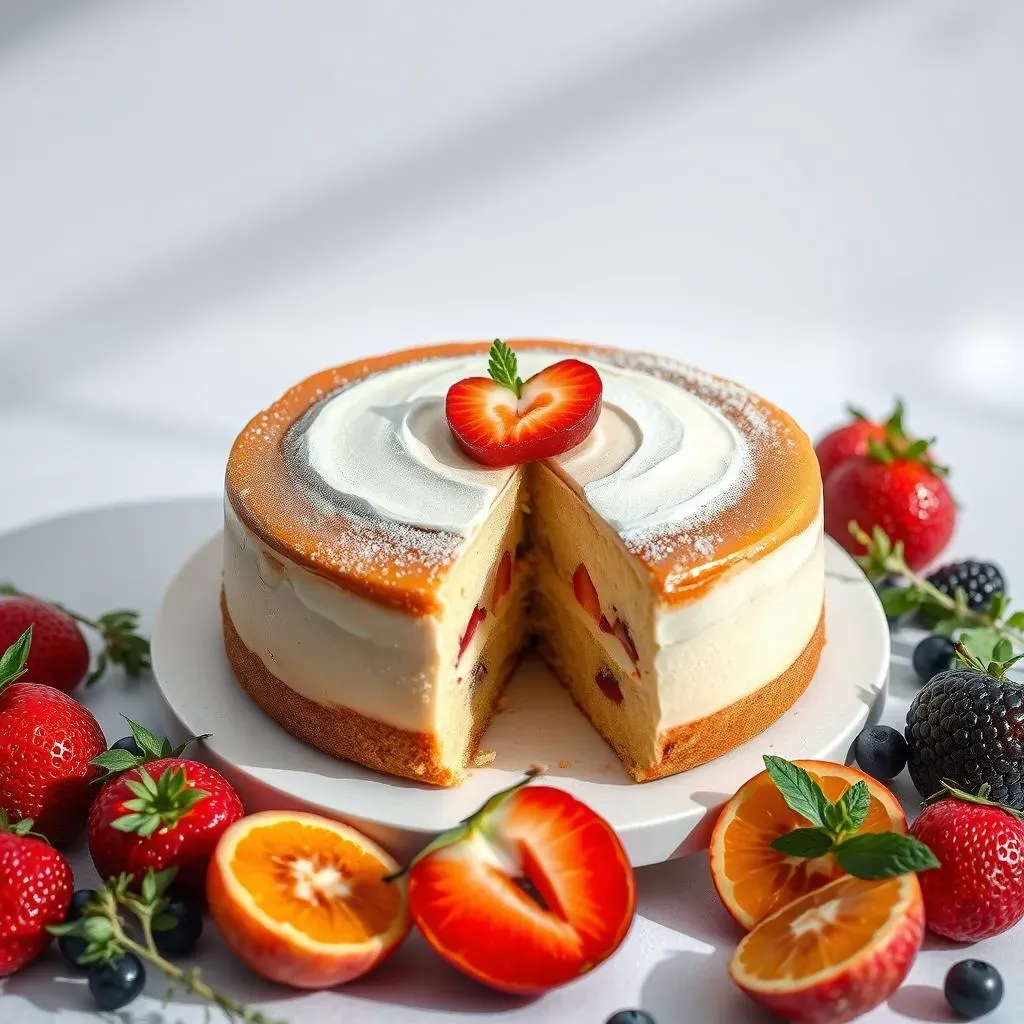Table of Contents
Let's face it, cake is amazing. But if you're watching your carb intake, the question "which cake has the lowest carbs?" becomes a crucial one. This article is your guide to navigating the delicious, yet sometimes tricky, world of low-carb baking. We'll explore the science behind carbohydrates in cakes, helping you understand what makes certain cakes higher or lower in carbs than others. Then, we'll dive into some seriously scrumptious keto-friendly cake recipes and delicious alternatives that will satisfy your sweet tooth without derailing your diet. We’ll also share expert tips and tricks for baking the perfect low-carb cake, including how to manage those pesky sugar cravings. Get ready to discover how you can enjoy cake and still reach your health goals! This isn't about deprivation; it's about smart choices and delicious discoveries. So, buckle up, buttercup, because we're about to embark on a carb-conscious cake adventure! Let's find the answer to "which cake has the lowest carbs" together.
Understanding Carbohydrates in Cakes
Understanding Carbohydrates in Cakes
Understanding the Sugar and Flour Situation
So, you're diving into the world of cake carbs? Awesome! Let's break it down. The main carbohydrate culprits in most cakes are sugar and flour. Sugar, of course, is pure carbohydrate, providing quick energy but often leading to those dreaded sugar crashes. Different sugars have different impacts; for example, some sugar alcohols found in keto-friendly sweeteners have fewer carbs than regular table sugar. But it's not just the sugar; flour is a major source of carbs too. Traditional cakes use wheat flour, which is packed with carbohydrates. That's why many low-carb cakes swap wheat flour for almond flour, coconut flour, or other low-carb alternatives. These alternatives significantly reduce the carb count while maintaining a somewhat cake-like texture. Want to know more about keto-friendly options? Check out our guide on making a keto cake!
Ingredient | Type of Carbohydrate | Carb Impact |
|---|---|---|
White Sugar | Simple Carbohydrate | High |
Wheat Flour | Complex Carbohydrate | High |
Almond Flour | Complex Carbohydrate | Low |
Coconut Flour | Complex Carbohydrate | Low |
Think of it like this: sugar is like a shot of espresso – immediate energy, but a quick crash. Wheat flour is more like a slow-release energy drink – sustained energy, but still a significant carb load. Almond and coconut flours are like a cup of herbal tea – gentle energy, lower carb impact. Knowing the different types of carbohydrates in your ingredients is key to understanding the overall carb content of your cake.
- Sugar: Quick energy, high carbs
- Wheat Flour: Sustained energy, high carbs
- Almond Flour: Gentle energy, low carbs
- Coconut Flour: Gentle energy, low carbs
But wait, there's more! The type of sweetener you use also makes a difference. Some sweeteners, like erythritol or stevia, have significantly fewer carbs than others. Even the type of flour you select impacts the carb count. For example, almond flour generally has fewer carbs than coconut flour. If you're looking for a delicious and lower-carb alternative, consider checking out our keto birthday cake recipe.
KetoFriendly Cake Recipes and Alternatives
KetoFriendly Cake Recipes and Alternatives
Classic Keto Cakes: A Delicious Starting Point
Let's kick things off with the classics! Many keto-friendly cake recipes use almond flour and coconut flour as their base. These flours provide structure and a slightly nutty flavor, which complements the sweetness beautifully. You'll often find recipes incorporating sugar alcohols like erythritol or stevia for sweetness, keeping the carb count low. These cakes are surprisingly moist and decadent, proving that low-carb doesn't have to mean dry or flavorless. A good keto chocolate cake, for instance, can be incredibly rich and satisfying. Need a recipe? Check out our guide on making keto cakes for some inspiration!
- Almond Flour Cakes
- Coconut Flour Cakes
- Chocolate Keto Cakes
Beyond the Basics: Exploring Creative Low-Carb Options
But the world of keto baking doesn't stop at almond and coconut flour! Think outside the box! You can experiment with other low-carb alternatives, such as flaxseed meal or even a blend of different nut flours. This opens up a world of flavor and texture possibilities. You could even try incorporating things like cocoa powder for a richer chocolate flavor, or spices like cinnamon for a warmer, more comforting feel. Remember, creativity is key! If you're looking for something truly unique, you might want to check out our recipe for a 2-ingredient keto cake – it’s surprisingly simple and delicious!
Flour Type | Carb Content (per cup) | Texture |
|---|---|---|
Almond Flour | Low | Slightly crumbly |
Coconut Flour | Low | Dense, absorbent |
Flaxseed Meal | Low | Slightly gummy |
Low-Carb Dessert Alternatives: When Cake Isn't the Answer
Sometimes, even the best keto cake might not be what you're craving. That's okay! There are plenty of other delicious low-carb dessert options to explore. Think creamy cheesecakes made with cream cheese and sugar-free sweeteners, or rich mousse made with heavy cream and cocoa powder. You can also explore no-bake options like chia seed pudding or coconut yogurt parfaits. These alternatives offer a different kind of indulgence, satisfying that sweet tooth without relying on flour or high-carb sweeteners. If you're interested in expanding your low-carb dessert horizons, consider checking out our post on keto 3 leches for a twist on a classic!
Tips for Baking LowCarb Cakes and Avoiding Sugar Cravings
Tips for Baking LowCarb Cakes and Avoiding Sugar Cravings
Mastering the Low-Carb Baking Techniques
Baking low-carb cakes requires a bit of finesse. Unlike traditional cakes, low-carb recipes often rely on alternative flours like almond or coconut flour. These flours absorb liquids differently than wheat flour, so you might need to adjust the recipe's liquid content to achieve the desired consistency. Experimentation is key! Don't be afraid to add a tablespoon or two of extra liquid if your batter seems too dry. Over-mixing can also make your cake tough, so gently fold in your ingredients until just combined. Remember, a little patience goes a long way in low-carb baking. For more tips on this, check out our guide on making keto cakes!
Another important aspect is the type of sweetener used. Sugar alcohols like erythritol or stevia can affect the texture and even the taste of your cake. Some sugar alcohols can leave a slightly cooling aftertaste, so experimenting with different types and amounts is essential to finding your perfect balance. Using a combination of sweeteners sometimes helps mitigate this. Additionally, consider the baking temperature and time; low-carb cakes might require a slightly lower temperature or longer baking time to achieve that perfect moist texture. Again, your oven and the specific recipe will influence this.
- Adjust liquid content as needed.
- Avoid overmixing the batter.
- Experiment with different sweeteners.
- Adjust baking time and temperature.
Taming Those Sugar Cravings
Let's be honest, sugar cravings are REAL. But you don't have to succumb to them! One effective strategy is to focus on satisfying your cravings with nutrient-rich foods. Instead of reaching for a candy bar, opt for a handful of berries or a small square of dark chocolate (unsweetened or with minimal sugar). These provide a touch of sweetness and antioxidants without the massive carb load. Another helpful tip is to stay hydrated. Sometimes, thirst masquerades as hunger or a sugar craving. Drinking plenty of water can help you differentiate between true hunger and a simple need for hydration. Plus, staying hydrated is essential for overall health and well-being. For more information on staying on track with your diet, you might find our article on what happens if you eat cake on keto helpful.
Managing stress is also crucial. Stress can trigger sugar cravings, so find healthy ways to manage stress, such as exercise, meditation, or spending time in nature. Prioritizing sleep is also vital. Adequate sleep helps regulate hormones that control appetite and cravings. Aim for 7-9 hours of quality sleep each night. Finally, don't deprive yourself completely! Allowing for occasional indulgences – in moderation – can prevent extreme cravings and help you stay on track long-term. This is about sustainable lifestyle changes, not a crash diet! We have a great recipe for a keto birthday cake if you want to indulge responsibly!
Strategy | Description |
|---|---|
Hydration | Drink plenty of water. |
Stress Management | Exercise, meditation, etc. |
Sleep | Aim for 7-9 hours. |
Mindful Indulgence | Allow occasional treats. |
Ingredient Swaps and Flavor Boosters
Don't be afraid to get creative with your low-carb baking! Experimenting with different spices can dramatically elevate the flavor profile of your cakes. Cinnamon, nutmeg, and cardamom can add warmth and complexity, while vanilla extract or almond extract can provide a subtle sweetness and enhance the overall flavor. You can also experiment with different types of low-carb sweeteners to find your preferred taste. Some people find erythritol to have a slightly cooling aftertaste, while others prefer stevia for its intense sweetness. Find what works for you. Consider adding extracts like vanilla or almond to enhance the flavor, or even a pinch of salt to balance the sweetness. For more ideas, you can take a look at our article on does keto cake taste good.
Finally, remember that even small changes can make a big difference. Using high-quality ingredients like good cocoa powder or real vanilla extract can significantly improve the taste and texture of your low-carb cakes. Don't skimp on quality! A little bit of extra effort in selecting your ingredients will be rewarded with a more delicious and satisfying dessert. And remember, it’s all about finding what you enjoy. Experiment, have fun, and don’t be afraid to try new things! Maybe you can create your own signature low-carb cake recipe. And don’t forget to check out our recipe for a 2-ingredient keto cake for some simple inspiration!
- Experiment with spices (cinnamon, nutmeg, etc.).
- Try different low-carb sweeteners.
- Use high-quality ingredients.
- Add extracts (vanilla, almond).
